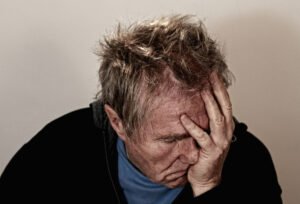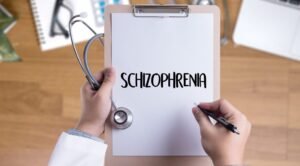Panic Disorder Diagnosis: Introduction
A panic disorder diagnosis can be given when you experience an unexpected series of panic attacks over a period of time. It was first classified by DSM-3 in 1980. Panic disorder is a very common mental health disorder with an annual prevalence rate in the United States of 2.1% to 2.8%, which is the highest rate in the world. Although a small percentage of patients may be diagnosed in early childhood it is most often diagnosed in the teens and early twenties. The median age of onset is 20 to 24 years old, and not many people are identified as having the initial symptoms after the age of 45 years old.
Panic Disorder Diagnosis: The Most Essential Features
The primary features that define a panic disorder are having persistent, inappropriate fears or worries about and recurring and unexpected panic attacks. These usually include changes to your body including dizziness, trembling, increased heart rate and sweating. Both cognitive and physical symptoms accompany the panic attacks and it is also necessary to recognize that the panic attacks that define a panic disorder diagnosis may also be of an expected nature. Usually, people persistently worry about having these recurrent physical symptoms with an intense fear of losing control.
Panic Disorder Diagnosis: Social and Cultural Considerations
It is estimated that approximately 50% of individuals with a panic disorder diagnosis report waking up panic stricken with what has been defined as “nocturnal panic attacks.” It has been proposed that there may be some evidence of genetic predisposition with more women than men having panic disorder. There are also social and cultural considerations involved at times. For example, it is believed that childhood sexual and physical abuse can be a risk factor as well as various other cultural considerations.
It is believed that individuals with a panic disorder diagnosis may display it in different ways within the context of their specific culture. It has been found that African-American and individuals from Afro-Caribbean countries have lower rates of panic disorder than Caucasians. Interestingly however, although Caucasians have a higher rate of panic disorder, they seem to have less functional impairment associated with the panic disorder than among African-Americans.
Panic Disorder and Panic Attacks:
Panic attacks on their own is not a diagnosable condition. Panic attacks do not become panic disorder until an individual has persistent worry and behavioral changes in relation to the unexpected panic attacks over a period of time. Also, panic disorder is not diagnosed if the panic attack is a result of a medical condition or due to the use or abuse of a medication or other substance.
Coding and Treatment for a Panic Disorder:
The only DSM-5 diagnostic code for panic disorder is 300.01 (F41.0). Although panic attack is referred to as a specifier it is not considered to be a mental health disorder and does not have a diagnostic code associated with it. Fortunately, both psychological treatment and medications are available for patients with panic disorder. Also, additional information related to panic disorder symptoms and treatment follows on another page of this website.
The specific symptoms necessary for a panic disorder diagnosis follow below:
Panic Disorder Diagnostic Criteria: 300.01 (F41.0):
A. Unexpected panic attacks. A panic attack is an abrupt surge of intense fear or intense discomfort that reaches a peak within minutes, during which time four (or more) of the following symptoms occur:
Note: The abrupt surge can occur from a calm state or an anxious state.
1. Palpitations, pounding heart, or accelerated heart rate.
2. Sweating.
3. Trembling or shaking.
4. Sensations of shortness of breath or smothering.
5. Feelings of choking.
6. Chest pain or discomfort.
7. Nausea or abdominal distress.
8. Feeling dizzy, unsteady, light-headed, or faint.
9. Chills or heat sensations.
10. Paresthesias (numbness or tingling sensations).
11. Derealization (feelings of unreality) or depersonalization (being detached from oneself).
12. Fear of losing control or “going crazy”.
13. Fear dying.
Note: Culture-specific symptoms such as tinnitus, neck soreness, headache, uncontrollable screaming or crying may be seen. Such symptoms should not count as one of the four required symptoms.
B. At least one of the attacks has been followed by one month (or more) of one or both of the following:
1. Persistent concern or worry about additional panic attacks or their consequences such as losing control, having a heart attack or “going crazy”.
2. A significant maladaptive change in behavior related to the attacks such as behaviors designed to avoid having panic attacks, such as avoidance of exercise or unfamiliar situations.
C. The disturbance is not attributable to the physiological effects of a substance such as a drug of abuse, a medication or another medical condition such as hyperthyroidism or cardiopulmonary disorders.
D. The disturbance is not better explained by another mental disorder such as panic attacks, do not occur only in response to fear and social situations, as in social anxiety disorder; in response to circumscribed phobic objects or situations, as in specific phobia; in response to obsessions, as in obsessive-compulsive disorder; in response to reminders of traumatic events, as in posttraumatic stress disorder; or in response to separation from attachment figures, as in separation anxiety disorder.
Diagnostic Information and Criterion adapted from the Diagnostic and Statistical Manual of Mental Disorders Fifth Edition American Psychological Association by Paul Susic Ph.D. Licensed Psychologist



